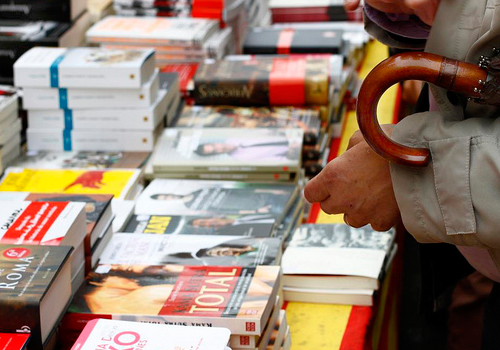Now What? Producing and Distributing Your Book Independently

As part of our “Now What?” Months, we’re shifting our focus to publishing in all its myriad forms. Today, Orna Ross of the Alliance of Independent Authors continues a series on independent publishing, focusing today on production and distribution :
This the third in a series of four blog posts that will lead authors through the design and formatting phases of the writing and self-publishing journey. You’ve completed the self-editing and editorial phase, and the design and formatting stages. Now what?
Production and distribution refers to the process and logistics of actually getting your book to the consumer. There’s a myriad of services and platforms from Amazon to Ingram to iBooks that help you put your work in the hands of readers. Each one has pros and cons, depending on your needs.
Are you looking for accessibility, discoverability, user-friendliness, and international markets, or a smaller distribution to get sales rolling first?Are you willing to commit to being exclusive to one platform, and if so, for how long?
Are you looking to sell e-books only, or do you want to make physical books available too? If you do, do you want to push for shelf space in physical bookstores?
Will you want your book to be available in libraries? Will you sacrifice any royalties for that discoverability?
Too often, authors choose package services because they’re seduced by advertising, or they think it’s the only way to self-publish, or they are frightened by the techno-talk and don’t realize that when you get beyond the jargon of file names and formatting, it is no more complicated to upload and produce an e-book or POD manuscript than to produce a manuscript with Microsoft Word (some might even say less so).
You need also to be aware that there are sharks out there in the literary waters. ALLi’s Watchdog desk produces an annual guide to choosing a self-publishing service, which you should find useful.
Most Popular e-book and print-on-demand platformsKindle Direct Publishing (KDP)
is the virtual granddaddy of Amazon DIY platforms, established in 2007, for independent authors who
want to publish in e-book format. The service is free, until you sell a book, then a percentage is deducted from revenue
CreateSpace is Amazon’s free, online, print-on-demand platform for indie authors. This service lets you sell your paperback book directly on the CreateSpace eStore, through Amazon regional stores (Amazon.com; Amazon.co.uk, etc), as well as through your own website, live events, etc.
Apple iBooks is available for all iOS-capable products, so readers can easily take their library on the go and have it synced to other devices—laptop, phone, iPad—as they switch. The program features the intuitive, user-friendliness that Apple has become known for. It is a proprietary format: you must own a Mac to create a book on iBooks.
Kobo features an Open Platform, which allows readers to buy and read multiple digital formats on one e-reader, and they support 60+ languages in 190 countries.
NOOK is owned by Barnes & Noble and many of our members, especially US members, sell significant numbers of books there, but it is widely recognized that NOOK is struggling in this market.
IngramSpark is aimed at “publishers looking for print and distribution services,” and is unique in offering both e-book and physical books in the same platform. You can pick and choose, and use Ingram for e-book distribution only, or (more commonly) physical book alone, or some combination of the two. They allow you to opt-out of distribution and go direct on two platforms only, at the moment: Amazon and Apple.
Platform ExclusivityThe first rule of investment is to diversify. Monopolies are never good, and you don’t want to be dependent on any single income stream for your bread and butter. Indie authors rightly love Amazon, but once you have more than two books, it really does make sense to think about going wide.
ALLi’s advice is to have your books as widely available as possible, in as many formats as possible.
You can find lots of more detailed advice about production and distribution at ALLi’s Author Advice Centre: Production & Distribution page, where also compare services and point out the advantages of each.
In the next, and final, blog post in this series, we’ll be covering promotion and marketing for the self-published author.
ALLi (The Alliance of Independent Authors) has a list of tools and services that makes indepedent publishing manageable. Members also have access to a closed forum, where they can ask questions of other authors who have published this way before them—and access to the “Ask ALLi” program, which promises to answer any self-publishing question.

Orna Ross writes and publishes poetry and fiction as well as creative guides, and is greatly excited by the democratising and empowering potential of author-publishing. Her work for ALLi has seen her named as one of The Bookseller’s “100 Most Influential People in Publishing” since 2013. ALLi (The Alliance of Independent Authors) is a non-profit professional association for authors who self-publish. Our motto is “Working together to help each other”.
Top photo by Flickr user brandbook.de.
Top photo by Flickr user bernat…
Chris Baty's Blog
- Chris Baty's profile
- 63 followers



